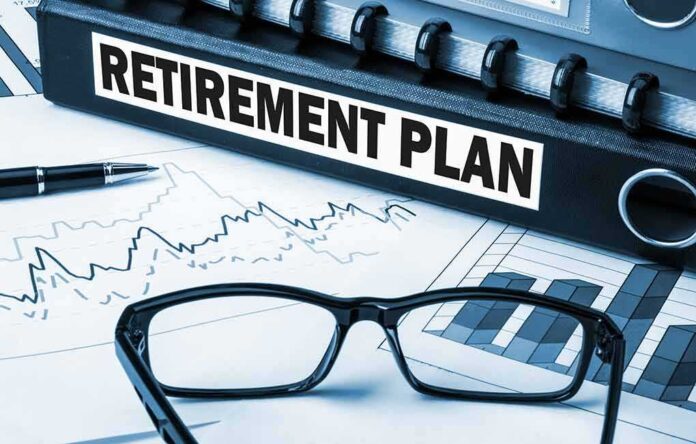
Retirement can feel like crossing a finish line, but for millions, the real marathon begins when hidden costs sprint ahead and threaten the security they’ve spent decades building.
Story Snapshot
- Healthcare costs soar beyond Medicare coverage, draining savings faster than most expect.
- Long-term care expenses often go unplanned, risking six-figure annual bills.
- Housing and property costs, especially rent, have doubled, blindsiding fixed-income retirees.
- Family support and taxes create unpredictable financial pressure in retirement.
Retirement Savings: The Illusion of Security
Retirees entering their golden years often imagine their nest egg as a protective shield, but the reality is more fragile. The “retirement number”—that reassuring sum financial planners tout—rarely accounts for the relentless rise of healthcare costs, housing expenses, and the hidden burden of supporting family members. The shift from defined benefit pensions to DIY 401(k)s and IRAs put greater risk on individuals, but most still underestimate what lurks outside their spreadsheets. When a 65-year-old in 2025 faces $165,000 to $172,500 in medical expenses alone, many discover too late that their calculations fell short.
The retirement planning industry often highlights inflation and market risk, but the true stealth threats are unpredictable: long-term care not covered by Medicare, property taxes doubling in step with rent inflation, and adult children moving back home. Those who planned for routine living costs are stunned by the tidal wave of surprise bills. Financial advisors warn that relying on averages is dangerous; outlier events—like needing private nursing care at $116,000 a year—can devastate even robust savings. The overlooked expenses are not just line items, but life-altering realities.
Healthcare and Long-Term Care: The Unseen Avalanche
Healthcare inflation outpaces overall consumer prices, and Medicare’s gaps leave retirees exposed. Prescription drugs, dental, vision, and hearing costs accumulate quickly for those on fixed incomes. Long-term care, the elephant in the retirement room, is almost never budgeted for, yet 70% of seniors will need some form of support. Private nursing home rooms now average $116,000 annually, and assisted living is not much less. Long-term care insurance, once touted as the solution, is too expensive for many and underused by most. Without dedicated savings or insurance, families face tough choices: pay out of pocket, rely on Medicaid, or risk depleting assets rapidly.
Expert analysis from financial firms and government agencies is unequivocal: ignoring these costs can mean the difference between independence and dependence. The 2008 financial crisis and COVID-19 pandemic exposed how quickly health shocks can derail retirement plans. Recent studies show that even high earners underestimate their exposure, often assuming Medicare or Social Security will bail them out. The reality is fewer public supports, higher deductibles, and more personal responsibility for the escalating bills.
Housing, Taxes, and Family: The Triple Threat
Housing costs are a persistent drain, not just for those who rent but even for homeowners. Since 2000, U.S. rents have soared 134%, while property taxes and maintenance costs have quietly doubled. Downsizing may offer relief, but market volatility and transaction costs eat into equity. Taxes on retirement income present another shock, as many fail to account for state and local levies, or the impact of required minimum distributions on their taxable income. Medicare surcharges (IRMAA) hit higher-income retirees, further squeezing budgets.
Family support remains the wild card. More retirees are helping adult children with housing, tuition, or healthcare, while others find themselves caring for elderly parents. These obligations are rarely planned for but can quickly become major financial commitments. Surveys reveal that retirees often feel blindsided, forced to cut discretionary spending or dip into emergency funds. The cost of caregiving—emotional and financial—can erode quality of life and compound stress.
How to Prepare: Practical Strategies and Open Questions
Financial planners urge scenario planning: model not just best-case, but worst-case outcomes. Building flexibility into retirement budgets is essential, with dedicated accounts for health and family emergencies. Tax-efficient withdrawal strategies and supplemental insurance are tools, but not panaceas. The debate continues over the adequacy of public programs, with experts calling for policy reform and greater transparency from financial institutions. The bottom line is clear: retirees who treat their “number” as a starting point—not a finish line—stand the best chance of weathering these hidden costs.
The open loop remains: how will future retirees adapt as longevity increases, costs escalate, and family structures shift? The next wave of retirees must learn from today’s oversights, moving beyond basic budgeting to embrace a new era of risk management—where scenario planning and flexibility are as vital as the nest egg itself.















